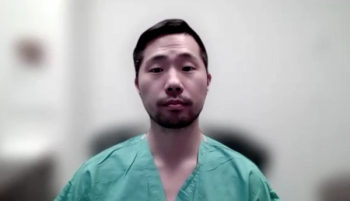
Innovations characterize vesicovaginal fistula repair
In this interview, Nitya E. Abraham, MD, discusses innovations in vesicovaginal fistula repair.
Urology Times® is celebrating its 50th anniversary in 2022. To mark the occasion, we are highlighting 50 of the top innovations and developments that have transformed the field of urology over the past 50 years. In this installment, Nitya E. Abraham, MD, discusses innovations in vesicovaginal fistula repair. Abraham is an associate professor and residency program director of urology at Montefiore Medical Center in Bronx, New York.
Could you provide an overview of the development of vesicovaginal fistula repair?
The incidence of vesicovaginal fistula is very low; it's 0.1% to 0.2%, usually occurring after total abdominal hysterectomy. When patients develop a fistula and it requires surgical repair, it can either be done transvaginally or transabdominally. Traditionally, the transabdominal approach involves a large laparotomy with subsequent prolonged hospital stay, postoperative pain, and just prolonged recovery in general. In 1998, the first laparoscopic vesicovaginal fistula repair was reported in the literature. In 2005, the first case report of a robotic vesicovaginal fistula repair was published. Since then, there have been several case series of robotic vesicovaginal fistula repairs in the literature. I would argue most people perform complicated vesicovaginal fistula repairs that can't be reached vaginally using a robotic abdominal approach.
Why should advancements in vesciovaginal fistula repair be considered an innovation in urology?
Robotic vesicovaginal fistula repair is an innovation from a technology standpoint. Because of the magnification, fistulas can be repaired using an extravesical approach. You can make a smaller cystotomy and even vaginotomy and repair the fistula using various types of suture, including barbed suture. This probably expedites removal of the catheter and the patient getting back to normal activity. Furthermore, the length of stay in the hospital is a lot shorter after a robotic vesicovaginal fistula repair. There have been reports of decreased estimated blood loss and decreased postoperative pain. Ultimately, getting our patients back to their normal activities is the goal, and robotic vesicovaginal fistula repair really expedites that.
Is there anything else you would like to add?
For patients who are seeking vesicovaginal fistula repair, surgeon experience does make a difference, and so going to a high-volume robotic surgeon who's familiar with fistula repair is the best option.
Newsletter
Stay current with the latest urology news and practice-changing insights — sign up now for the essential updates every urologist needs.

















